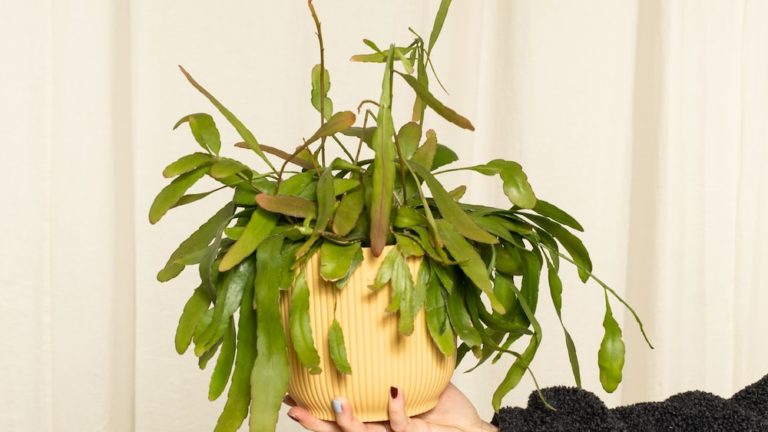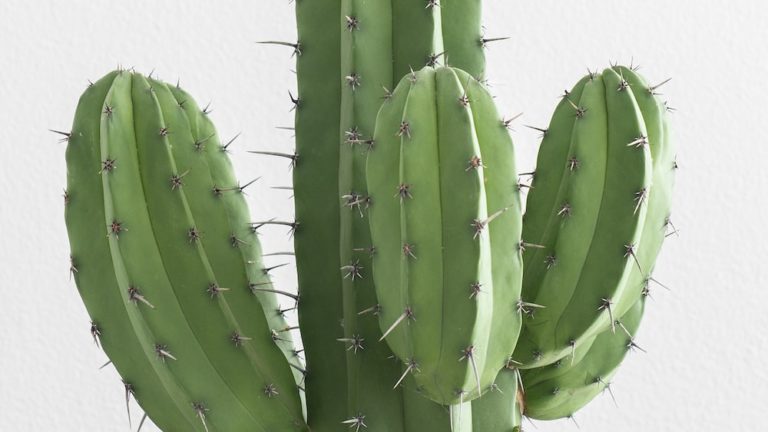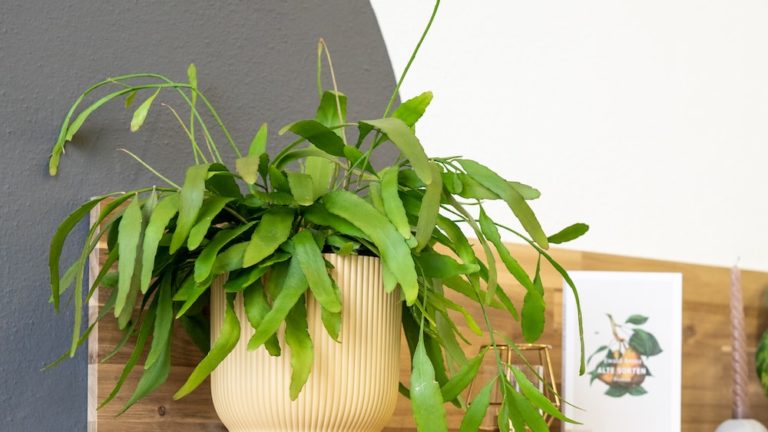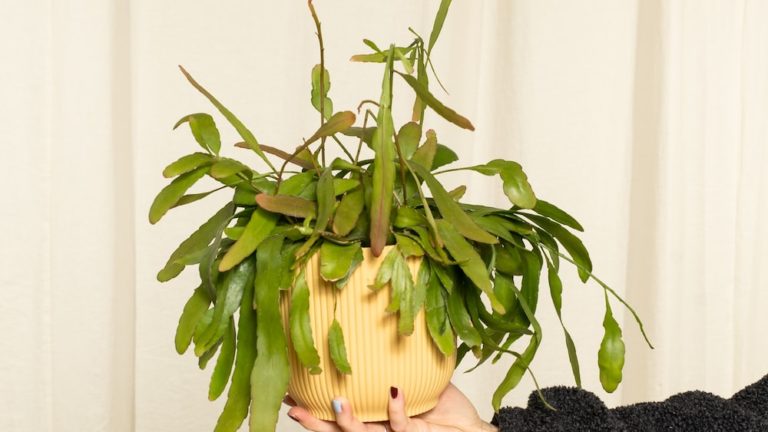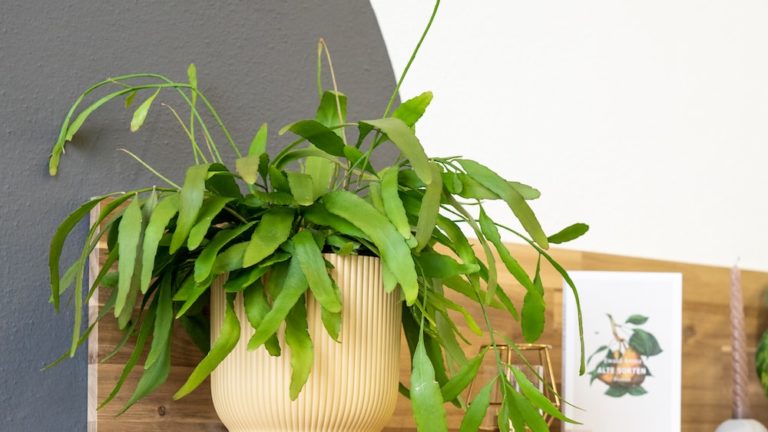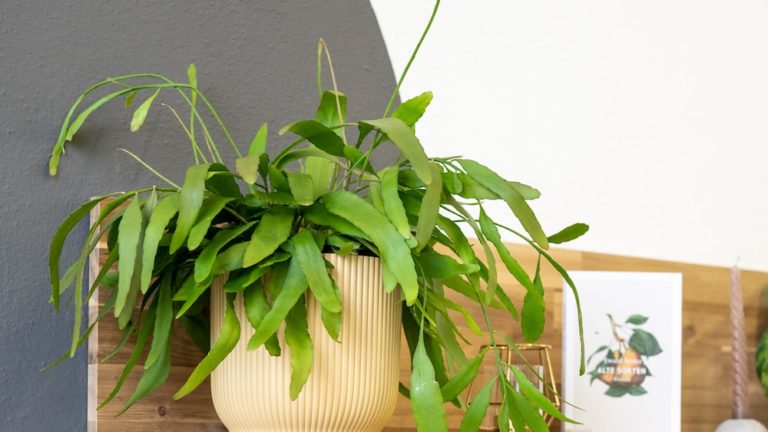Rhipsalis Vs Lepismium: The Ultimate Comparison Guide

Rhipsalis Vs Lepismium: The Ultimate Comparison Guide
Cacti lovers and green thumbs, lend me your ears! Rhipsalis vs Lepismium, an intriguing journey awaits you today! As a green thumb myself, with an enduring love affair with the resilient cacti, I’ve often walked in my garden, admiring the intricate shapes and unique characters of both Rhipsalis and Lepismium. I look at them and think, how much these spiky succulents have taught me about patience, perseverance, and resilience.
On an exceptionally sunny day, as I gazed upon the enticing beauty of my rhipsalis, whimsy struck me. What if I dedicated a comprehensive guide to exploring the world of these two types of cacti; a cornucopia filled with aesthetic comparisons, care tips, propagation techniques, and more? And so, my dear readers, here we are!
Before we delve any deeper, allow me to clarify one thing. This guide aims not to pit Rhipsalis against Lepismium, but to celebrate their distinct beauty and characteristics. So, buckle up, plant enthusiasts, as we embark on this delightful journey of understanding, appreciating, and unraveling the secrets of the splendid Rhipsalis and Lepismium.
Understanding Rhipsalis and Lepismium
First thing first, it is essential to comprehend the foundation – the very essence – of our stars, Rhipsalis and Lepismium. The way they thrive, the soil they prefer, their favorite servings of sunlight, and their intricate anatomy, all come together to form a vibrant portrait of these captivating cacti. So, let’s pull the curtain and step into their alluring world!
What is Rhipsalis?
Rhipsalis, my horticulture comrades, is a curious creature indeed. Often known as mistletoe cacti, Rhipsalis holds claim as the largest and, arguably, the most intriguing, genus in the Cactaceae family. This group of epiphytic cacti is native to South America, Central America, and the Caribbean.

With over 60 unique species under its belt, Rhipsalis boasts a diversity that is as stunning as it is fascinating. Each species comes with its character, carrying a distinct shape, size, flower color, and even different fruit forms.
Rhipsalis, the largest genus in the Cactaceae family, is a diverse and fascinating group of epiphytic cacti native to South America, Central America, and the Caribbean.
What is Lepismium?
Let me introduce you, dear plant lovers, to Lepismium – an epiphytic cactus that seems to have mastered the art of subtlety and grace. Native to South America’s rain forests, the Lepismium genus is a part of the ever-so-extensive Cactaceae family.
To gaze upon a Lepismium plant is a visual delight. The way the leaf-like branches hang, creating a cascading waterfall of beauty, evokes a sense of tranquility. The stunning white or pink flowers that sporadically grace the plant add just the right touch of charm to this elegant specimen.
Morphology and Anatomy of Rhipsalis and Lepismium
Now that we are acquainted with our stars let’s dive deeper into the morphology and anatomy of Rhipsalis and Lepismium. From their physical attributes to intricate inner workings, let’s explore what makes each of them unique. Remember, the devil is always in the detail!
Physical Characteristics of Rhipsalis
Rhipsalis – a world filled with cascading branches, tiny delicate flowers and curious globular fruit. This genus, my friends, is truly a horticultural wonder. Epiphytic in nature, most rhipsalis species feature an enthralling range of branching stems that often veil the pot’s edges, creating a seemingly floating cloud of green.
The stems, typically round or angled, serve as the main photosynthesis site. On the other hand, the leaves are quite insignificant or completely absent. Additionally, one cannot ignore the tiny, often bell-shaped, flowers, typically white or yellow. They herald the arrival of the fascinating globular fruit, which adorn the plant like small pale baubles.
Physical Characteristics of Lepismium
Lepismium, though bearing a resemblance to rhipsalis, carves its identity quite elegantly. Its segmented, leaf-like stems which are predominantly flattened, serve as the primary photosynthetic organs. Escaping the limelight, actual leaves are barely noticeable or completely nonexistent.
Lepismium flowers, though few and far between, are a sight to behold. Usually white or pink, they contrast beautifully against the deep green of the foliage. In its wake, comes the striking fruit, akin to a berry, offering a vibrant dash of color amidst the monotonous green.
Care Guide for Rhipsalis and Lepismium
As intriguing as our cacti duo of Rhipsalis and Lepismium are, they undoubtedly demand unique care. Fret not, for I am here to guide you through it. From light requirements to the watering regime, let’s delve into the nitty-gritty of their upkeep.
Light Requirements
Ah, the game of light and shadow! Both Rhipsalis and Lepismium present quite an interesting scenario when catering to their light requirements. Contrary to what one might assume about our spiky friends, they are not major fans of direct, harsh sunlight, preferring instead, dappled or indirect light.
Rhipsalis fares well in moderate light conditions. A shaded patio, curtain-filtered window, or artificially lit corner – these are the spaces where this beauty would feel most at home. In terms of Lepismium, while it appreciates light, too much direct sunlight can cause sunburn. Remember, my fellow green thumbs, balance is always key to flourishing!
Humidity and Watering Needs
Let’s now delve into the secret life of our cacti friends, beginning with their thirst – or lack thereof. Rhipsalis and Lepismium are quite indifferent when it comes to sipping on H2O. Like a wise old sage, they store water in their plump stems, enabling them to endure long periods of dryness. However, that doesn’t mean they don’t appreciate a nice drink now and then.
It’s essential to imagine their natural habitats – the humid and rainy forests of South America. In keeping with these conditions, our cacti love high humidity and regular watering, but don’t overdo it. Their roots are rather sensitive and can easily rot. Wait until the topsoil dries out between watering sessions. Remember my dear readers, balance is critical in tending to these plants.
Balance is critical in tending to cacti, as they require high humidity and regular watering but their roots are sensitive and can easily rot, so it’s important to wait until the topsoil dries out between watering sessions.
Soil Preferences
Swapping the glass of water for a shovelful of dirt, let’s talk about soil preferences. As storytellers who chronicle the tales of native habitats, Rhipsalis and Lepismium are etched in my memory with tales of their treks on the steep slopes and cracks of rocky terrains where ordinary plants wouldn’t dare set root.
The lesson here? They need fast-draining soils. A mixture of regular potting soil, coarse sand, and perlite usually works wonders. Ensure the soil is loose and airy, to mimic the cacti’s natural milieu. An environment that is too compact can lead to the tragedy of waterlogging and root rot, a fiasco that our spikey sweethearts would rather avoid.
Fertilizer Use
If we think of sunlight as the heart and water as the soul, then fertilizers are undoubtedly the vitamins of plant life. And just as we don’t gobble down vitamins recklessly, cacti intake should be mindful too. You see, both Rhipsalis and Lepismium prefer a nutrient-rich diet but in moderation.

- During their growing season (spring to late summer), feed them with a half-strength cacti fertilizer.
- This should be done every month to ensure sustained growth, but remember to pause when they are not actively growing.
Is it always necessary though? Not really. I fondly recall a Rhipsalis in my garden that thrived simply on sun and sporadic watering, without a speck of fertilizer in sight. Sometimes, less is truly more.
Seasonal Care Tips
As the seasons change, so do the needs of our beloved cacti. Their care might seem complicated, but take heart. They mostly go with the flow, just as we don layers and discard them in sync with the shifting seasons.
In summer, provide Rhipsalis and Lepismium with light shade. Too much direct sunlight can lead to sunburn. Yes, dear reader, plants can get sunburned too – I too was surprised when I first discovered that.
During winter, temperature management is essential. Ensure that your indoor cacti stay warm – the ideal temperature is between 10-15 °C (50-60 °F). Outdoor plants should be shielded or brought indoors to evade frost damage. As the adage goes, “prevention is better than cure”; a quick patrol under the soft, chilly sky can save your precious plants from the harsh winter doom.
Propagation of Rhipsalis and Lepismium
Ah, propagation, the humble beginnings of plant life, where a tiny cutting can give birth to an entire new plant – like a phoenix rising from its ashes. In the world of cacti, it is a strangely beautiful process, full of hope and new beginnings. Just imagine – a handful of your thriving Rhipsalis and Lepismium could be the silent envoys of joy in another’s home, sharing their radiant beauty and resilient spirit, one succulent stem at a time.
Propagation Techniques for Rhipsalis
To propagate Rhipsalis, one doesn’t need extensive horticultural experience, just a keen eye for detail and an enduring spirit of experimentation. Here are some simple steps:
- Trim a healthy stem and let it dry for a couple of days. This allows the cut end to callus over, preparing it for new growth.
- Plant this cutting into the soil mixture described above and water it lightly.
- Be patient, dear reader. Soon, roots should appear, and a new Rhipsalis will be born.
The joy of seeing a fresh green shoot sprout and taking its very first baby steps towards maturity is an experience that resists the expertise of words.
To propagate Rhipsalis, trim a healthy stem, let it dry, plant it in soil, water it lightly, and patiently wait for roots to appear and a new Rhipsalis to be born.
Propagation Techniques for Lepismium
Propagation techniques for Lepismium are quite similar to that of Rhipsalis, but remember, dear friends, each plant sports its unique rhythm. So watch closely, and remember the magic words – patience and attentiveness.
- Select a healthy stem and let it dry for a few days.
- Insert the cutting into the soil mixture and water sparingly.
- Eventually, roots should begin to grow, and the life cycle will majestically restart.
Comparing Rhipsalis and Lepismium
Unraveling the mysteries of Rhipsalis vs Lepismium has been a fascinating journey, hasn’t it? With their unique needs and individual quirks, it’s clear that while they are cousins in the cacti family, they maintain their individuality. Watch this space as we explore their similarities and differences in more depth. But let’s not forget, both of these magnificent plants hold their own charm and secrets – they are indeed, the epitome of hidden beauty in a spiked disguise.
Similarities Between Rhipsalis and Lepismium
It is genuinely remarkable how both Rhipsalis and Lepismium share more than just a botanical family. Imagine treading through rain-soaked South American forests, witnessing a spectacle of verdant life clutching on age-old trees; that’s the very home Rhipsalis and Lepismium cherish. Known as mistletoe cacti, their sprawling, cascading form tends to dangle from trees, enhancing the forest’s charm.
They both love humidity, indirect light, and a well-draining organic medium to thrive. Their undeniable shared charm stems from their splendid leafless branches, often mistaken for leaves. These are the shields facing the harsh world, the stewards that channel photosynthesis, much like the unswerving resolve life occasionally demands from us.
Differences Between Rhipsalis and Lepismium
While the bond they share is undoubtedly unique, exploring the differences – the distinct individuality – of Rhipsalis and Lepismium is equally riveting. Anyone acquainted with botanist Mark Preston’s work will confirm his finding that Rhipsalis blossoms exhibit a yellow stigma, while Lepismium’s are unmistakably white.
Rhipsalis is mostly epiphytic and can adapt to low lighting; its flexibility is mesmerizing. In contrast, Lepismium demands brighter, indirect light and has a more structured form, holding a dignified reticence that showcases itself beautifully in a hanging basket with its bold and striking silhouette.
FAQs
1. What are the main differences between Rhipsalis and Lepismium?
The main differences between Rhipsalis and Lepismium center on their respective stigma colors and their light requirements. Rhipsalis carries a yellow stigma and can thrive even under low light conditions. Lepismium, on the other hand, sports a white stigma and requires brighter, indirect light for optimal growth.
2. How do I propagate Rhipsalis and Lepismium?
To propagate Rhipsalis and Lepismium, use stem cuttings. Make sure the cuttings have healed for a few days before planting them into a quick-draining cactus mix. Keep the soil lightly moist and provide bright, indirect light until new growth appears.
3. What are the ideal growing conditions for Rhipsalis and Lepismium?
The ideal growing conditions for Rhipsalis and Lepismium involve a humid environment, indirect light, and a well-draining organic medium. Both of these enchanting cacti flourish under these conditions, closely mimicking the rainforests they originate from.

4. Can Rhipsalis and Lepismium be grown together?
Whether Rhipsalis and Lepismium can happily coexist in the same pot depends on the light conditions. Since Lepismium requires brighter indirect light than Rhipsalis, combining them in the same pot could stress the latter due to potential over-exposure.
Conclusion
I hope this guide has been illuminating in revealing the subtle nuances and distinctions between our two mesmerizing subjects: the comparison of rhipsalis vs lepismium. The intertwining narratives of their similarities and differences echo the profound interconnectedness of life.
May these bounties of nature charm you, bring therapeutic relief from our often chaotic and fast-paced world, and inspire you to discover more about the fascinating realm of cacti. Our journey today through the complex and captivating world of these mistletoe cacti is just one glimpse into the vast cosmos of botanical wonders waiting to be understood and appreciated. At the end of the day, life, much like our exploration of plants, is about celebrating both aligning similarities and individual differences.
So, to all my fellow plant enthusiasts – keep the curiosity alive, remember that every plant has a story to tell, and every story is worth listening to. Happy growing, my friends, and until next time… With love, Sophia.

